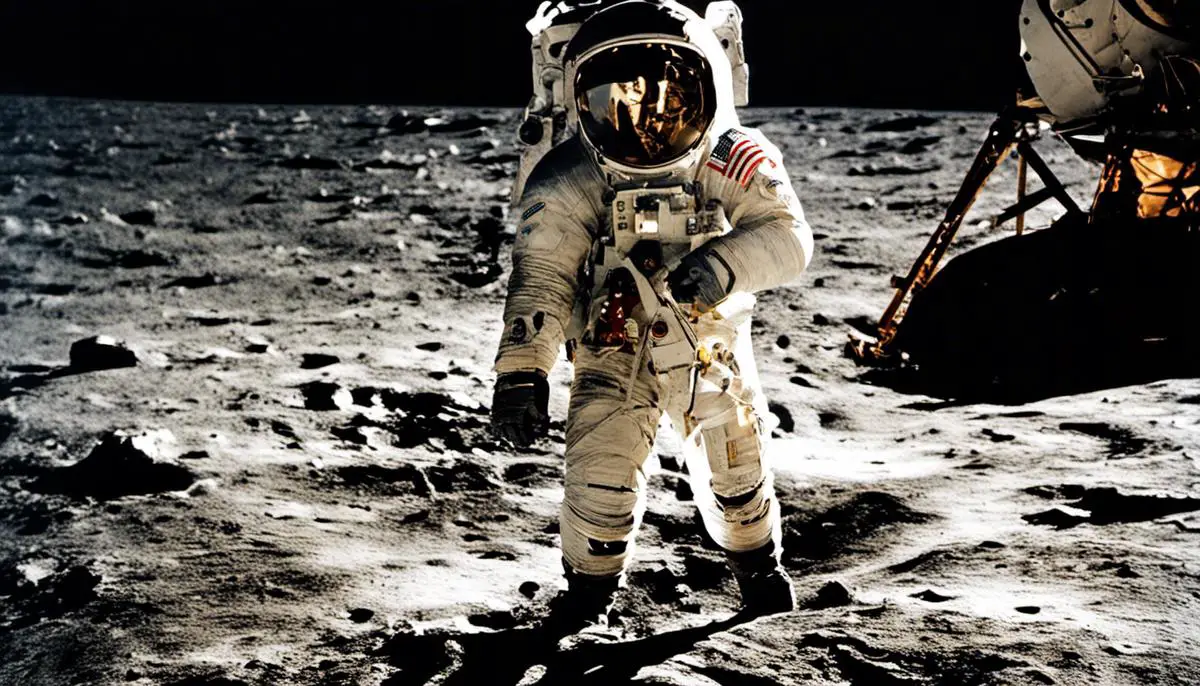Humanity’s venture into the cosmos remains one of the most profound achievements in our history. The Apollo missions embodied the pinnacle of this quest, propelling us to become an interstellar species. Commanded by NASA, these historic missions journeyed beyond the confines of our home planet, setting human feet on the alien lunar landscape. This exploration was not just a product of whimsy and audacity, but a testament to our love for the unknown, our ambition, and our relentless striving for progress. The key objective of the Apollo missions was to achieve a manned lunar landing and return safely to Earth—an ambitious goal that opened avenues for myriad scientific discoveries and technological advancements. This captivation will take us on a journey from the ashes of Apollo 1 in 1967 to the triumphant return of Apollo 17 in 1972, reinforcing the profound legacy and lasting impact these missions have left behind.
Contents
Objective and Overview of Apollo Missions
A Deep Dive into the Primary Objectives of the Apollo Missions
Some of humankind’s most important scientific advancements occurred nearly 250,000 miles away from earth—in space. This article delves into one of the most monumental scientific endeavors of the 20th century, the Apollo missions. These undertakings not only secured the United States’ status as a paramount figure in space exploration but also revealed crucial details about the moon’s geology and interior structure.
The Apollo missions, organized by the National Aeronautics and Space Administration (NASA), were a series of lunar missions conducted between 1960 and 1972 with two clear-cut objectives. The first was quite straightforward—to ensure national prestige by landing an American astronaut on the moon before the Soviet Union. However, the second objective, while more scientific in nature, carries as much weight in the overall mandate—conducting experiments on the lunar surface to broaden our understanding of the cosmos.
The race to the moon between the two world’s superpowers can be traced back to the Cold War era. Competition over the dominance of outer space played a substantive role in highlighting national technological capabilities, thus securing geopolitical supremacy. The Apollo missions became a symbol of this contest, aiming to refute the Soviet Union’s initial prestige as the forerunners of human spaceflight, following Cosmonaut Yuri Gagarin’s historic flight in 1961.
Yet, the Apollo missions were more than a race for geopolitical might. They had significant scientific undertones aimed at enlarging the corpus of astro-geological knowledge. The lunar landscape was studied meticulously, with samples taken back to earth for further investigation. The missions led to a robust understanding of lunar soil’s mechanical properties, advancing knowledge on seismic, magnetic, and other geophysical aspects of the moon.
Apollo astronauts were also tasked with setting up instruments to provide long-term observations even after leaving the lunar surface. This scientific infrastructure, known as the Apollo Lunar Surface Experiments Package (ALSEP), included a seismometer to detect possible moonquakes and a retroreflector to measure the exact Earth-Moon distance using lasers. Moreover, an Aldrin mirror was installed for the same purpose, which, to this day, reflects laser beams from observatories on earth to measure the distance between the two celestial bodies accurately.
Notably, the Apollo missions served as a catalyst in enriching our comprehension of the moon’s internal structure. Apollo 16 launched in 1972 aimed to explore the lunar highlands, while Apollo 17, the last mission, focused primarily on investigating the moon’s geology. These missions helped discover previously unknown facts, including the moon’s younger age compared to previous estimates and its similar core composition to Earth.
In conclusion, the Apollo missions’ primary objectives extended beyond the immediate goal of landing an American on the moon. Spanning beyond the geopolitical objectives, the value instituted by these missions lies in the scientific leaps they fostered. The new knowledge and revelations about lunar geology, soil mechanics, and internal structure significantly expanded our understanding of the cosmos, presenting a deeper insight into our own planet’s genesis. These missions, thus, continue to echo as a beacon of human curiosity and quest for exploration.
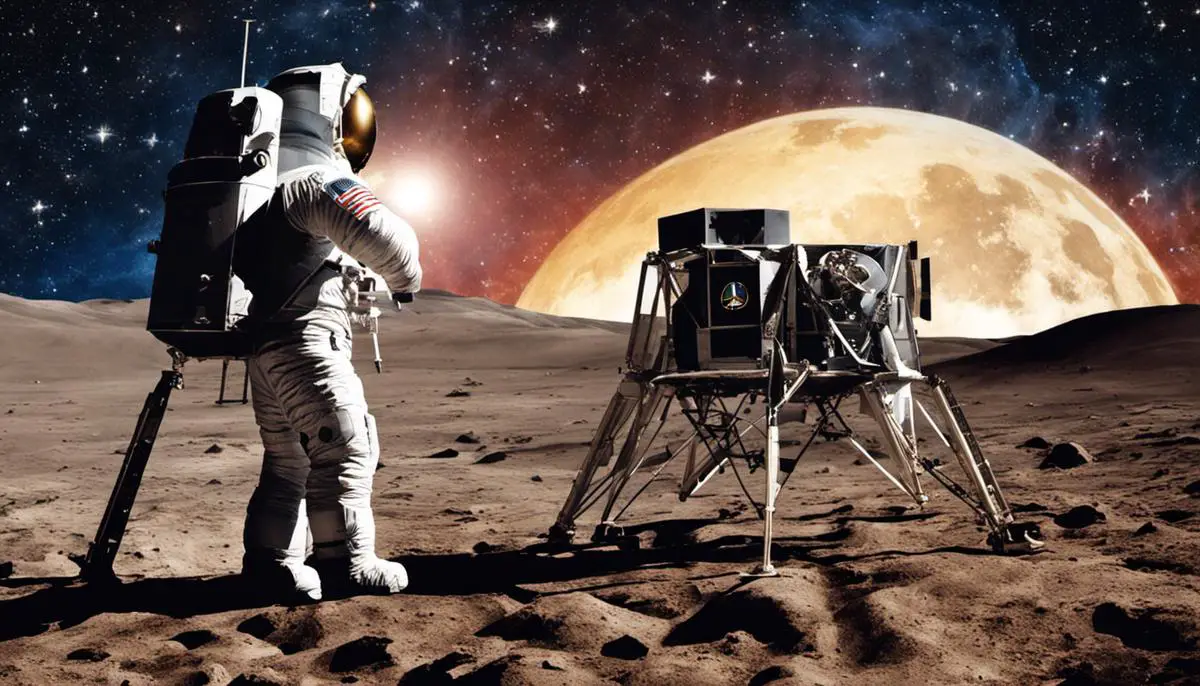
Chronological Detailing of Apollo Missions
A Chronological Journey Through the Apollo Missions: Apollo 1 to Apollo 17
NASA’s Apollo program, a series of manned missions to the moon, was an intricate symphony of science, engineering, and exploration. The program unfolded through a sequence of intricate missions from Apollo 1 in 1967, right up to Apollo 17 in 1972.
Apollo 1 was initially scheduled to launch in 1967. Regrettably, a tragic cabin fire during a launch rehearsal led to the death of all three crew members – Gus Grissom, Edward White, and Roger Chaffee. This disaster led to extensive design and safety modifications, a poignant reminder of the perils of space exploration.
Modernization brought about an aerial resurgence in Apollo missions with Apollo 7 in 1968. Apollo 7’s mission, helmed by astronauts Wally Schirra, Donn Eisele, and Walter Cunningham, established the safety and efficiency of the Apollo command module in Earth’s Orbit.
Apollo 8, also launched in 1968, was conducted by Frank Borman, Jim Lovell, and William Anders. They made history by taking the first crewed voyage around the moon, refining potential lunar landing trajectories.
Apollo 9, in March 1969, and Apollo 10, in May 1969, tested other essential components for a lunar landing. Apollo 9 tested the lunar module in Earth’s orbit while Apollo 10 played the vital role of a “dress rehearsal” for the historic Apollo 11 mission.
Apollo 11, launched in July 1969, is eternally remembered for the landmark achievement of landing humans on the moon for the first time. Visionary astronauts Neil Armstrong and Buzz Aldrin etched their footprints on the lunar surface immortalizing “one small step for man, one giant leap for mankind.”
The Apollo program continued to soar beyond this milestone, however. Apollo 12, launched in November 1969, executed a precise landing near the Surveyor 3 probe, demonstrating targeted landing capability, while Apollo 13, launched in April 1970, proved NASA’s capability of managing a full-scale in-space catastrophe after an oxygen tank explosion.
Apollo 14, launched in February 1971, landed in the Fra Mauro region, originally Apollo 13’s target. Alan Shepard famously played golf on the moon, striking a lighter note amidst the tremendous scientific exploration.
Apollo 15, launched in July 1971, marked the first use of the Lunar Roving Vehicle, vastly increasing astronauts’ range on the moon for geology work. Two more missions – Apollo 16, launched in April 1972, and Apollo 17, launched in December 1972 – further expanded our scientific understanding of the moon.
Apollo 17, the final Apollo mission, held multiplicative significance. Geologist Harrison Schmitt became the first professional scientist to venture to the lunar surface, amassing an extraordinary wealth of geological data. With the embers of Apollo 17’s engine dissipating in the lunar sky, a remarkable chapter in human exploration drew to a close.
The Apollo missions, each a pillar in its enormous odyssey, revolutionized lunar and space exploration as we know it. Despite their technical and technological complexity, they also brought forth an understanding of the risks, rewards, and unfathomable wonders awaiting us beyond Earth’s realm.
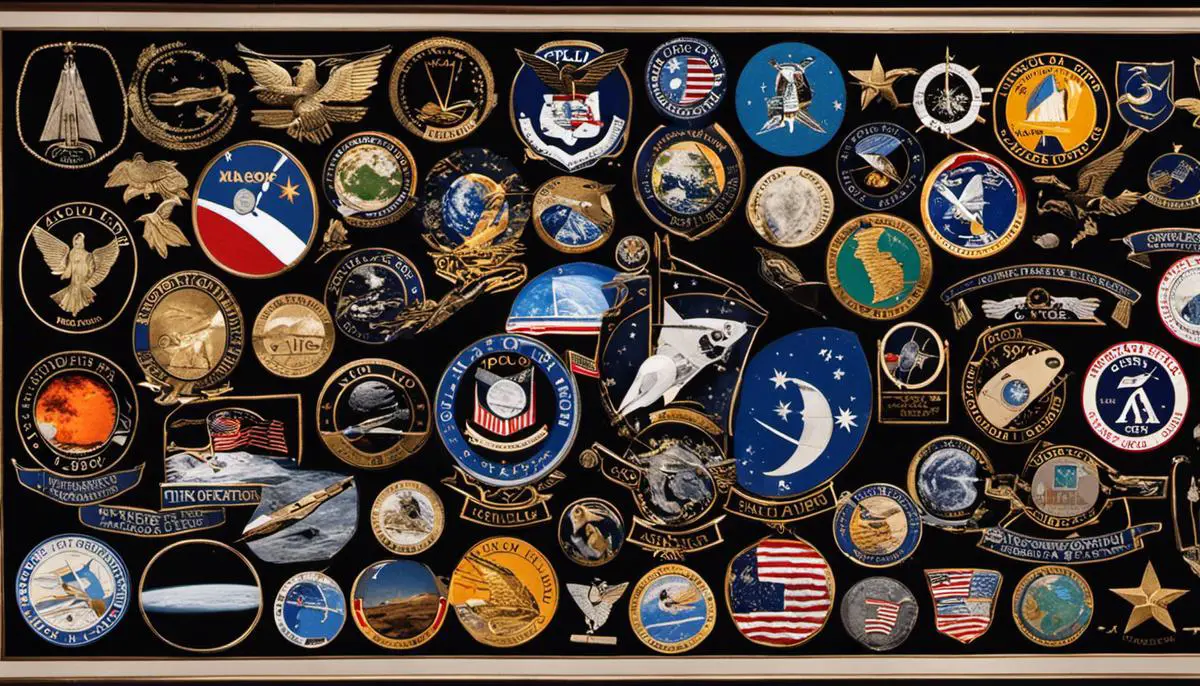
Scientific Discoveries and Technological Advancements
Scientific and technological advancements can be found embedded in each of the Apollo missions, contributing both directly and indirectly to humankind’s understanding of the universe. Delving deeper into these singular missions connects the dots, illuminating the scientific achievements that sprouted from each launch, landing, and discovery.
Starting with Apollo 1, we saw the catastrophic effects of a launch pad fire, resulting in the loss of three astronauts’ lives. Severe as this tragedy was, it also highlighted the imperatives for improved safety standards and stimulated significant redesign of the Apollo spacecraft, which reinforced vital advancements in safety technology and regulations for future crewed space flights.
In the midst of recovery from Apollo 1’s mishap, Apollo 7 initiated updates in telecommunication advancements with the first live television broadcast from space. The mission served as a technological demonstrator, epitomizing the importance of real-time communication between spacecraft and ground control. While Apollo 8 etched history with its lunar orbit, it also pioneered navigational techniques, including navigating by the stars – invaluable in the age before GPS.
Apollo 9 and 10 played dramatic roles in testing and refining lunar module technologies, setting the stage for lunar landings. Meanwhile, Apollo 11’s renowned moon landing signaled not just a human feat, but also executed the utilization of satellite technology, enabling precise measurements of the Earth-Moon distance using a lunar laser ranging experiment.
Consider Apollo 12’s precision landing near Surveyor 3 – a representation of intricate advancements in landing and navigational technology. Apollo 13, while an aborted mission, led to invaluable lessons in crisis management and problem-solving under life-threatening conditions. This mission acted as a catalyst for improvements in mission planning, spacecraft design, and in-flight procedures.
The ensuing Apollo 14 mission saw Alan Shepard’s lunar golf swing, an act remembered more for its theatrics than its scientific purpose. Yet, the mission tested the feasibility of performing fine motor tasks in a lunar environment. Further, the mission included selenological inspection, survey, and sampling in a hilly upland region.
Apollo 15 was the first mission to deploy the Lunar Roving Vehicle. This was a technological marvel that extended astronauts’ reach, enabling further scientific exploration of the moon’s geography, including closer examination of lunar features such as rilles and craters.
Apollo 16 continued this extensive scientific exploration, enriching our understanding of lunar geology and chemical compositions. Samples from this mission exposed the moon’s geologic dynamism, leading to revamped models of its formative history.
Finally, with Apollo 17 as the closing act, geologist Harrison Schmitt became the first professional scientist on the lunar surface. This advanced the scope of in-situ observations throughout the mission, while the onboard Lunar Surface Gravimeter put forth data for better understanding of the moon’s gravitational field.
Reading the story of Apollo missions is akin to skimming through humanity’s audacious technological achievements in space exploration. Each mission, be it a successful stride or calculated misstep, gifted us with new knowledge and tools, becoming stepping stones towards our present understanding of the universe and the technology that helps us navigate it.
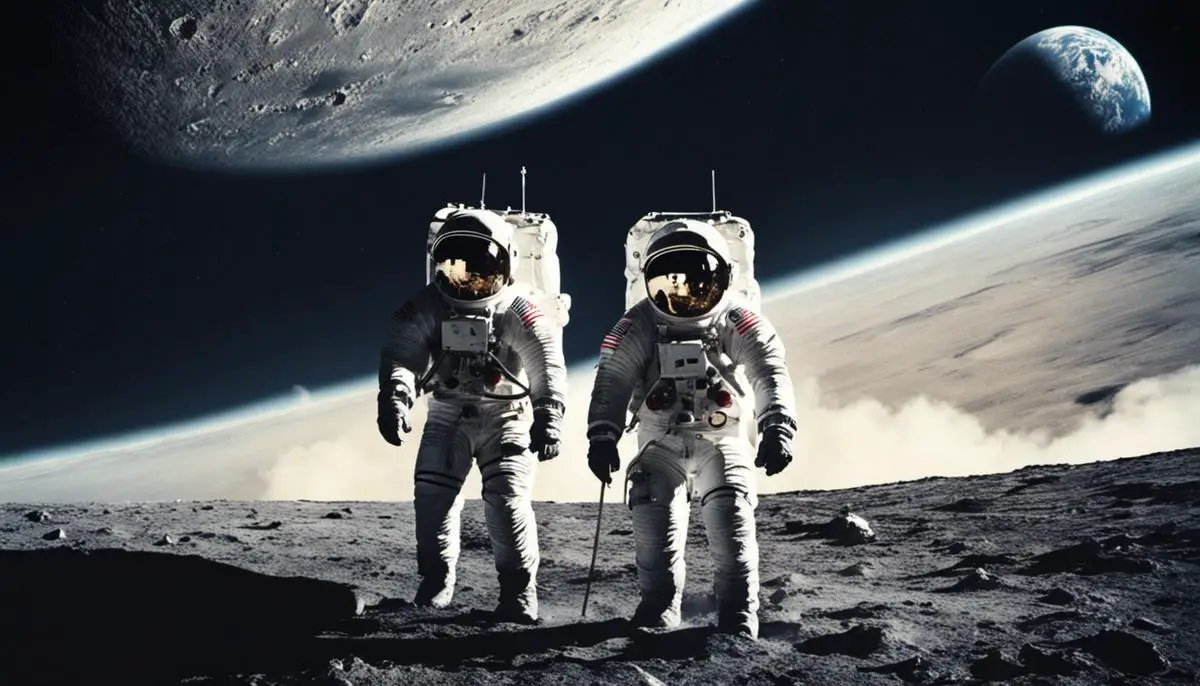
Legacy and Impact of the Apollo Missions
Expanding on the pioneering feats listed above, one cannot overlook the technological developments that were a direct or indirect consequence of the Apollo missions. Among these is the evolution of computing. The Apollo Guidance Computer, known for guiding astronauts in the intricate path from Earth to Moon, remarkably shortened the developmental timeline for the microchip industry. This flight computer was arguably one of the earliest examples of a real-time, multitasking digital processor.
In addition to this, the Apollo missions brought about revolutionizing advancements in heat shield technology, necessary for re-entry into Earth’s atmosphere. The material developed to dissipate the extreme heat generated during re-entry, Avcoat, has been further improved and was even used in the Mars Science Laboratory mission in 2012 to safely deliver the Curiosity Rover to the surface of Mars.
Further to the technological scope, the bike-sized Lunar Roving Vehicle (LRV) took mobility in space to another level. Lunar soil’s composition made it unpredictable and challenging to navigate. The LRV not only transformed lunar surface exploration by extending the reach of the astronauts, but the knowledge gained also paved the way for the design of present-day Mars rovers.
Moreover, the pioneering efforts to telecast from space forever transformed public engagement with astronauts and space missions. This was an indispensable component for maintaining public support for the Apollo program and beyond, and it sparked an entire genre of live space broadcasting that continues today.
The Apollo missions further set a high caliber for international collaborations in space exploration. It marked the initiation of essential discussions about space law, marking the first attempt to manage outer space’s exploration and applications for peaceful purposes. It is worth mentioning that the Apollo-Soyuz Test Project that brought astronauts from the former USSR and the United States together, opened a gateway that led to the International Space Station collaboration.
To summarize the heritage of the Apollo missions extends beyond national prestige and scientific exploration. In the backdrop of the Cold War, Apollo amplified the idea of space exploration as a peaceful endeavor, uniting humanity under the banner of knowledge. It laid the foundation for the global, interdisciplinary and cooperative space exploration programs we see today.
As we look forward to stepping on the lunar surface once again with the Artemis program, we can only hope that these new missions will carry forward the spirit of Apollo—meeting challenges, pushing boundaries, and always aiming for the stars.
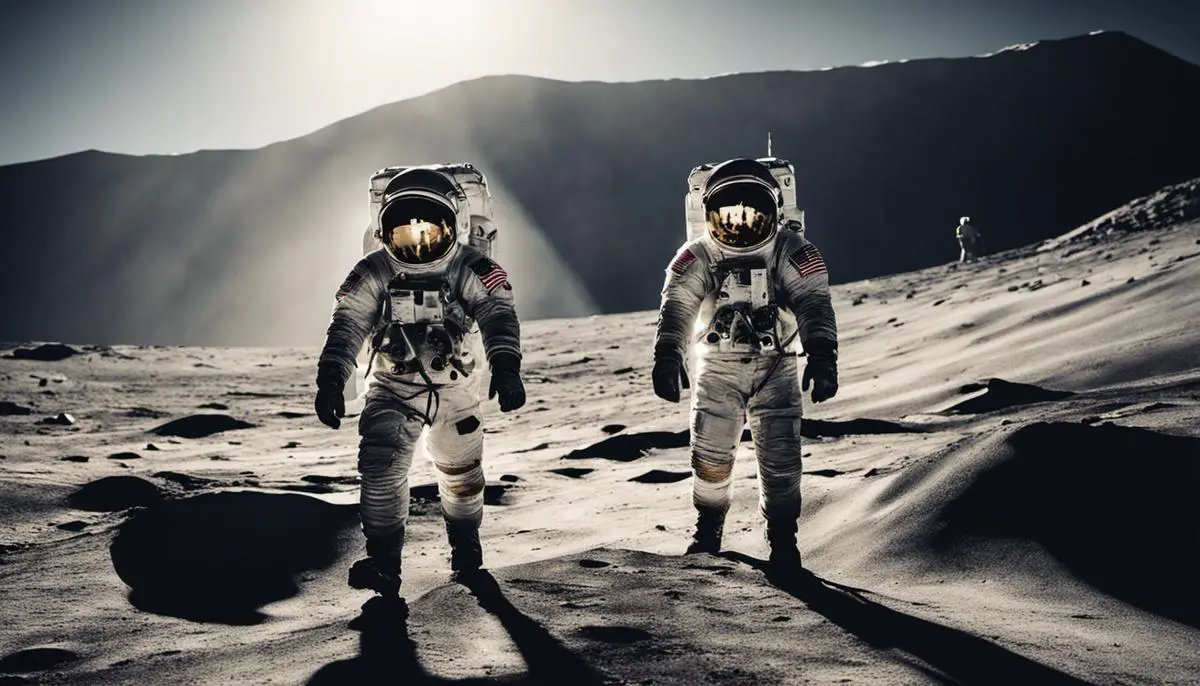
The voyage of the Apollo missions was not merely a journey to the moon; it was a giant leap for humankind. The advancements in technology and an explosion of scientific knowledge, the inspiration imbued in millions of hearts, the bit of humanity left on the lunar surface—all of these constitute the legacy of the Apollo missions. The lines of technological and scientific impact stemming from these missions have been deeply etched in our world, shaping our understanding of the cosmos and ourselves. The moon landings were not an end but a launchpad, a beginning of humanity’s cosmic journey. They triggered an age of exploration and innovation that continues to grow and mature, pushing us to continue reaching for the stars, venturing further, diving deeper, and forever gazing into the vast wonders that lie beyond our comfortable blue sphere.

With a passion for unraveling the mysteries of the moon, Dr. Luna Sterling is a highly-respected astrophysicist, a dedicated lunar enthusiast, and a captivating blogger. After earning her Ph.D. in Astrophysics from the Massachusetts Institute of Technology (MIT), she served as a lead scientist and mission planner for NASA, contributing significantly to various lunar missions.
For over two decades, Luna has been at the forefront of lunar science, pushing boundaries and pioneering discoveries that have enriched our understanding of the moon’s geological history. However, it’s her infectious enthusiasm for all things lunar that truly sets her apart.
In an endeavor to bring the moon closer to everyone, Luna started her blog, “Luna’s Lens: A Closer Look at the Moon.” With this platform, she offers a unique blend of intriguing moon facts, updates on lunar missions, and personal anecdotes from her experiences in the field, all told in an engaging and accessible manner.
Luna’s unique blend of scientific expertise and warm, humorous writing style has transformed complex astrophysics into compelling narratives that captivate her audience. As a gifted communicator, she leverages her knowledge and experience to relate scientific facts to everyday life, thus making her blog a must-read for both seasoned space enthusiasts and curious newcomers.
Interactive and inviting, Luna frequently encourages reader engagement through thought-provoking discussions and a monthly ‘Ask Dr. Luna’ feature, where she personally answers questions about the moon and space exploration. A celestial storyteller at heart, Dr. Luna Sterling’s passion for the moon is as vast as the cosmos she explores, making her an invaluable beacon in the world of lunar science.
